Recent paper in Scientific Reports shows how currents of the Western Indian Ocean create both distinct and related populations for conservation
Sampling adult trees to assess genetic diversity of a highly fragmented peri-urban mangrove area at Londji Beach (Kribi, Cameroon)
In collaboration with researchers at the Vrije Universiteit Brussel, a University of Maryland (UMD) postdoctoral researcher recently co-published a large-scale study examining the genetic diversity of mangroves over more than 1,800 miles of coastline in the Western Indian Ocean, including Eastern Africa and several islands. While the mangroves of Asia, Australia, and the Americas have been more extensively studied, little work has been done classifying and highlighting genetic diversity in African mangrove populations for conservation. Similar to other wetlands, mangrove trees like the species studied in the new paper in Scientific Reports (Rhizophora mucronata) create habitats for myriad animal and plant life, acting as hubs of biodiversity while also economically supporting many local communities. This work showcases how oceanic currents create both connectivity and barriers between mangrove populations, with important implications for how to protect these ecosystems.
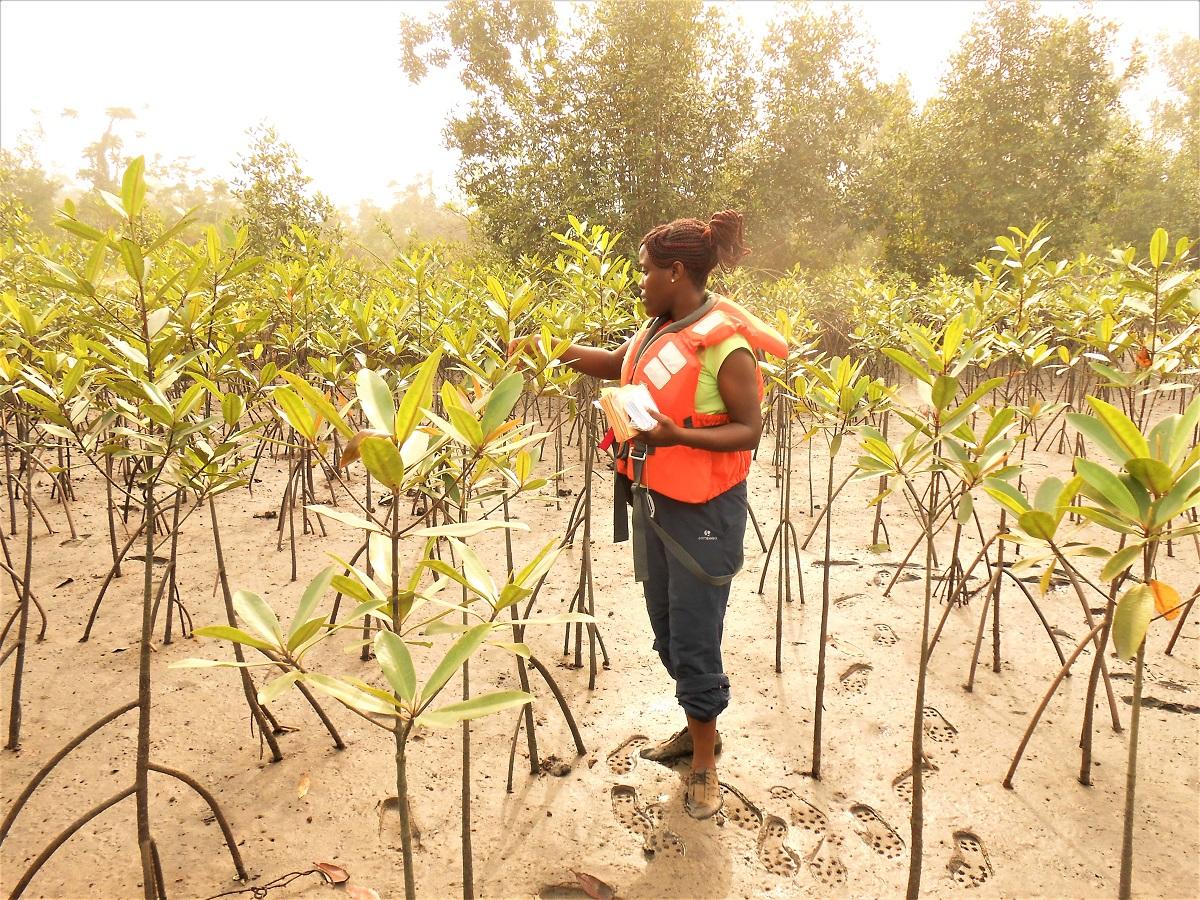
“Whenever I get asked about mangroves, I always say they are my happy place,” says Magdalene Ngeve, postdoctoral researcher at UMD in Maile Neel’s lab (professor in the Department of Plant Science and Landscape Architecture and Department of Entomology). “They are very fascinating systems to work with. When I went to do my field work for my Master’s thesis and got to experience mangroves, be close to the trees, and see how much biodiversity they host, I instantly fell in love and knew this is what I should be studying.”
Born and raised in Cameroon, Ngeve grew up near the coast, but didn’t give her local mangroves much thought until she left to pursue her graduate degrees on a scholarship to the Vrije Universiteit Brussel. After studying zoology for her undergraduate work, Ngeve became a biologist with a specialization in environment, biodiversity, and ecosystems for her Master’s and conservation ecology and genetics for her PhD. It was there that her love of mangroves blossomed, and she brought that passion with her to UMD as a Presidential Postdoctoral Fellow.
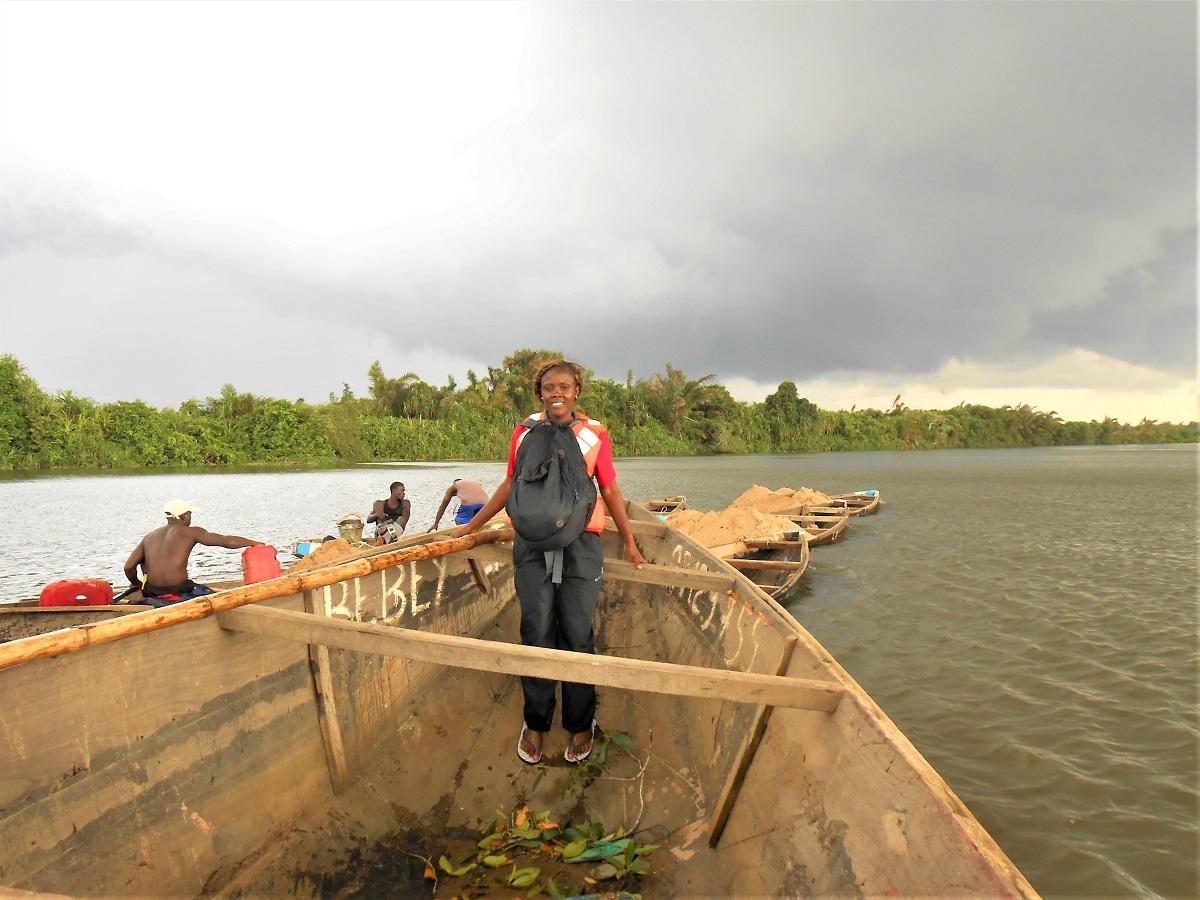
“I am so excited we got this study out there, with the collaboration of mangrove experts in Brussels [Belgium] and around the world,” says Ngeve. “In conservation, we have limited resources to manage everything on the planet, so we talk about these evolutionary significant units, which are units we should focus on to preserve as much genetic variability as possible to preserve their evolutionary potential and ensure the ecosystem is resilient. This work showed us that we actually have even more distinct populations than we realized, and that is important for conservation.”
As Ngeve explains it, people don’t often think about ocean currents as a way to spread seeds and seedlings (known as propagules), or even pollen. But for many species, water is the primary way seeds are spread and diversity is ensured. “Ocean currents can be genetic barriers, and they can be facilitators of genetic connectivity at the same time,” explains Ngeve. “It just depends on how they all come together and connect. In this study, we saw that ocean current patterns maintain genetic diversity of remote island populations like Seychelles, and cause an accumulation of genetic diversity around where the South Equatorial Current [near the equator] splits near the Eastern African coastline. Seychelles and Madagascan populations likely came to existence from ancient dispersal events from present day Australia and Southeast Asia, and these island populations act as an important stepping stone in spreading diversity to the East African coastline, which we found was a much younger population. Splitting currents also create a barrier to genetic connectivity between even nearby northern and southern populations of the East African coast and the Mozambique Channel.”
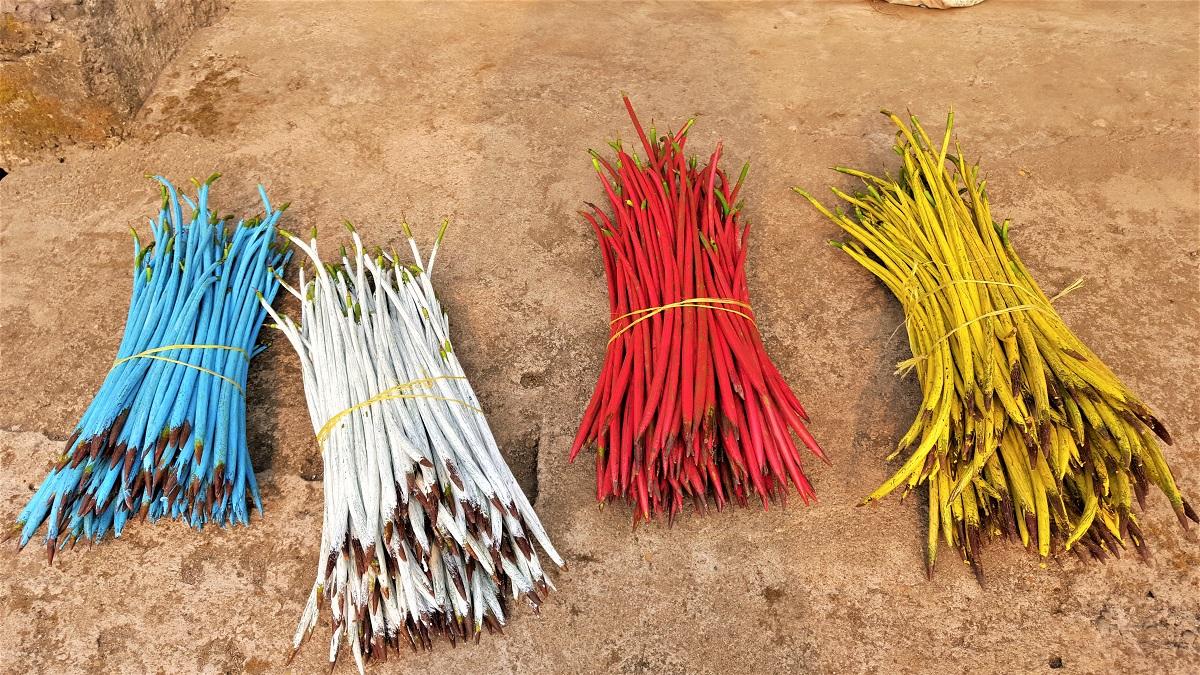
This study helps fill in an important gap in the research, since African mangroves, especially the genetics aspects, have been understudied according to Ngeve. For her doctoral work, Ngeve presented some of the first genetic work on the mangroves of the West African coast, so this work expanding to the East African coast is a natural next step. By understanding the genetic diversity of these species locally, researchers can make connections across populations for global conservation.
Ngeve is particularly interested in coastal environments, or the intersection of land and sea as a way to look at larger global change phenomena. “Almost everything we do on land affects the ocean, and those intermediate environments are like the bridge,” says Ngeve.

“We talk a lot about climate change and sea level rise, and coasts and estuaries [like the Chesapeake Bay and Hudson River Estuary] are on the front lines. How are species in these ecosystems surviving and adapting? Foundational species like mangroves and submerged aquatic vegetation, which I also study as a postdoc, are home to so many species and host high biodiversity. Making sure they are resilient means protecting that biodiversity for all that depend on them.”
Ngeve is also considering how humans depend on the mangroves, and hopes to find ways that rural communities in her home country of Cameroon can protect the mangroves while still providing for their families. Through her start up project called BeeMangrove, she hopes to transition locals from overharvesting the mangroves for wood as a livelihood to raising honey bees that can simultaneously help pollinate the mangroves and produce honey to sell.
“While studying the Rhizophora racemosa mangrove species which is pollinated by both wind and insects, I had observed that mangroves that are more windward produced more seedlings. From my genetic work, I also observed pollination limitations at study sites. So clearly, there is a pollination problem in the mangroves that don’t get the wind,” explains Ngeve.
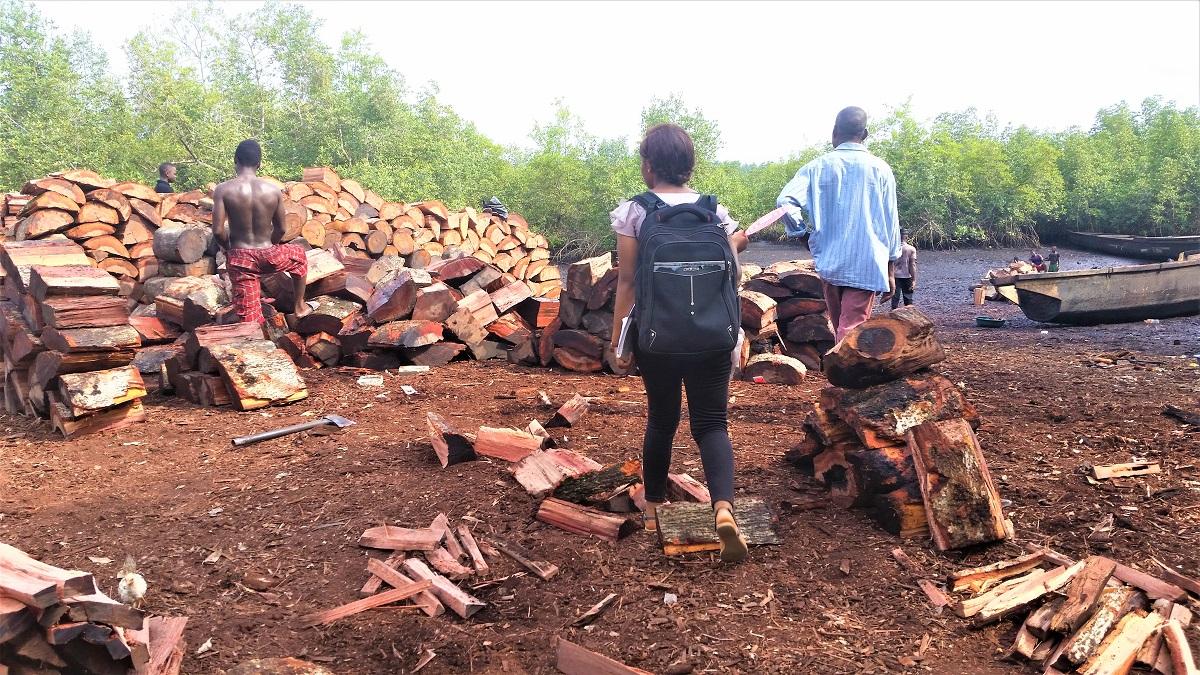
“At the same time, there are also mangrove markets where people sell nothing but mangrove wood, and the logging is an issue. It’s no doubt that mangroves like other ecosystems are declining, and we are losing so much biodiversity. In rural Cameroon, I began to wonder what these people could do differently. But they are relying exclusively on the mangroves for their livelihood. It’s all they have for food, they harvest the wood for building their homes, and sell it to provide for their families and send their children to school - mangroves are everything to them. How do you tell people so dependent on the system to stop logging? You have to provide an alternative.”
Ngeve hopes that with future funding, BeeMangrove can be that alternative. She is currently examining perceptions about mangroves in Cameroon. She has worked with local organizations to provide education and outreach to communities, and the first beehive has been installed. The goal is to work with locals from the start to pilot and grow this program with their support.
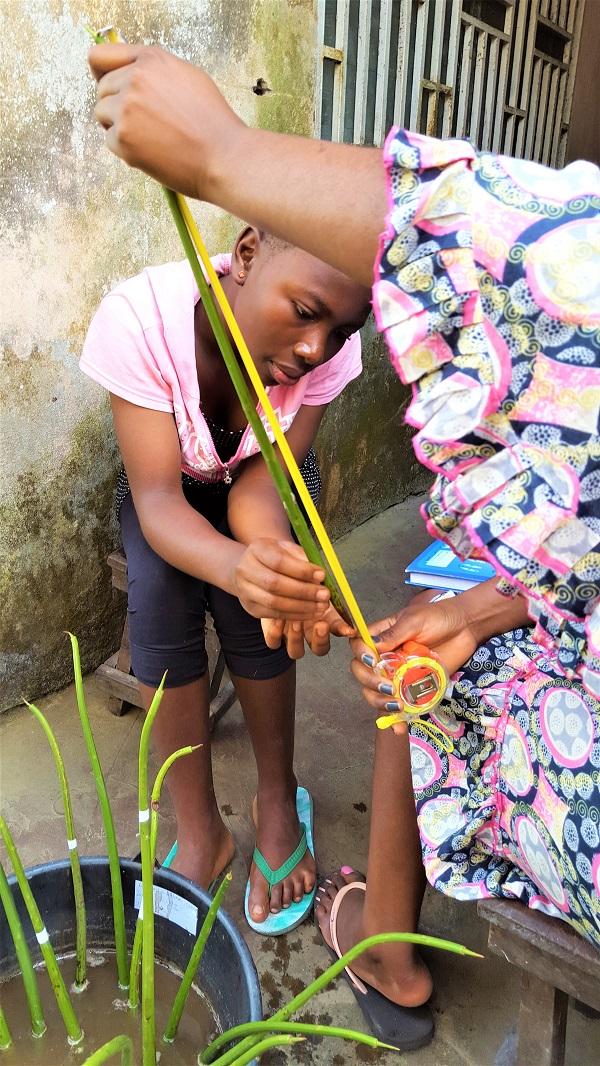
Growing up in Cameroon, this project is very personal to Ngeve. She is grateful for all the support from her family as a researcher. “My mother became a mangrove researcher herself, tending to my juvenile mangrove plants even after my growth experiment was over,” she says. Her father, Jacob Ngeve, is in fact an ‘88 doctoral alum of the UMD Department of Plant Sciences and Landscape Architecture (then Department of Horticulture). As a quantitative plant geneticist, he has had an international career as an agricultural researcher, and his influence is carried through in her work to this day.
“Growing up in Africa, I remembered seeing photos he would send of him in these very same walls in the College of Agriculture and Natural Resources,” says Ngeve. “I never imagined I’d be here one day - it is a real privilege. My father would always tell me, ‘Education is the only thing a father can give his child, because that, no one can take away from you.’ And that meant so much to me because I clung to those words, and against all odds, I studied and followed my dreams. I look forward to making an impact here the way he did.”
Ngeve is also incredibly thankful for the mentorship she has received on her road to this work and to UMD, from Neel as her current mentor, to those in Brussels, to her family. “My mentors are the reason I am here, and I look forward to paying forward all they have invested in me.”
The paper entitled “Expansion of the mangrove species Rhizophora mucronata in the Western Indian Ocean launched contrasting genetic patterns” is published in Scientific Reports, DOI: 10.1038/s41598-021-84304-8.